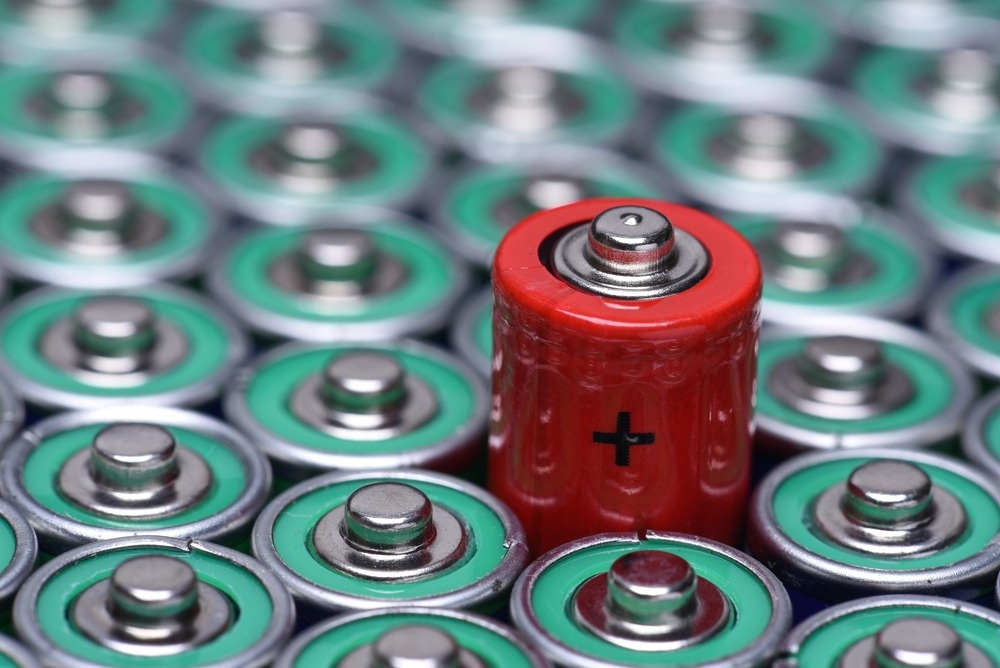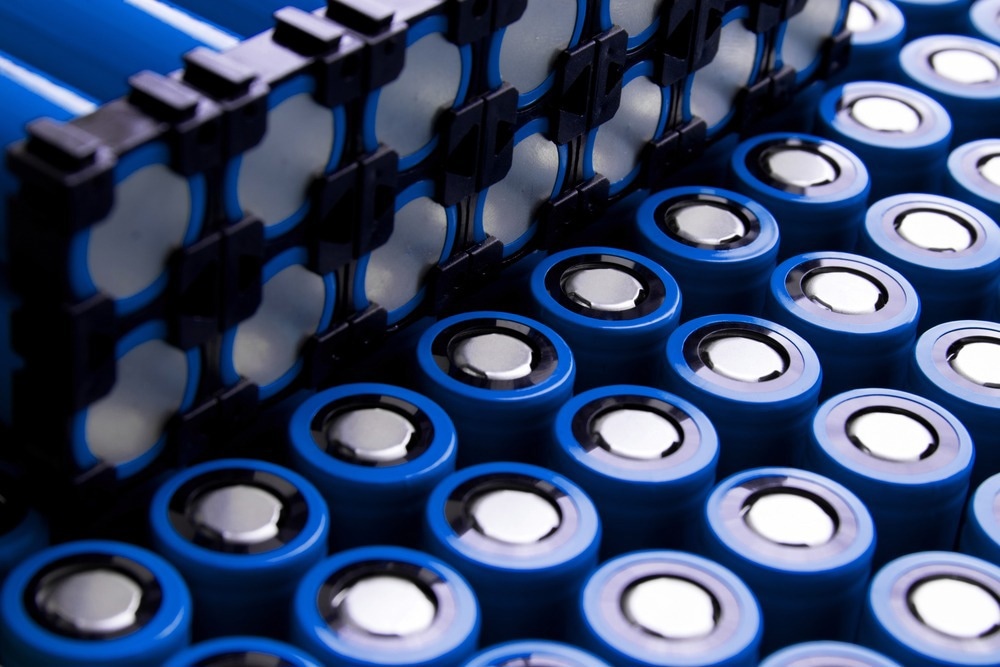This article discusses the feasibility of using a novel sodium-sulfur battery technology for energy storage applications, specifically for renewable energy storage.

Image Credit: Flegere/Shutterstock.com
Rising concerns regarding global warming and climate change have accelerated the transition toward renewable energy. However, energy generation from renewable sources such as wind is not as consistent as fossil fuel-based energy generation, which has increased the importance of highly efficient energy storage solutions, such as batteries, for the effective utilization of renewable energy.
Drawbacks of the Existing Batteries Used for Renewable Energy Storage
Currently, batteries used for renewable energy storage are manufactured using rare earth materials such as cobalt, graphite, and lithium. A substantial amount of these materials will be required in the next few decades to achieve climate neutrality.
However, the extraction of these materials at scale is technically challenging, costly, and environmentally harmful. For instance, lithium extraction can lead to soil degradation, adverse impact on the ecosystem, biodiversity loss, and water shortages.
Additionally, the production of lithium-ion batteries which are used most extensively for energy storage applications due to their relatively high energy density, efficiency, and safety is increasingly becoming expensive due to the rising cost of lithium.
In the last few years, lithium has been used extensively in different electronic products, including electric vehicles, which substantially increased the demand for lithium. Thus, the identification of low-cost battery technologies with higher energy density is necessary to reduce the cost of large-scale stationary renewable energy storage systems.
Sodium-Sulfur Batteries as a Potential Solution
Room-temperature sodium-sulfur batteries are considered to be one of the most suitable battery technologies for grid-scale, high-energy-density, and low-cost stationary storage systems due to the high theoretical capacity and abundance of both sodium and sulfur.
A sodium-sulfur battery is a high-temperature battery that operates at 300 oC temperature and is composed of molten sulfur and molten sodium as positive and negative electrodes, respectively, and a solid ceramic sodium alumina as electrolyte. These batteries can be constructed using non-toxic and inexpensive materials. For instance, sodium can be processed in large amounts from seawater.
However, rapid capacity fading and low capacity due to the shuttling effect of polysulfides and the insulating nature of sulfur, and the low loading amount of active material sulfur, typically below 60%, in the cathode have restricted the use of sodium-sulfur batteries in practical energy storage applications.
In a recent study published in the journal Advanced Materials, researchers synthesized atomic-level dual-active site catalysts wreathed on sulfur-doped graphene frameworks with the highest sulfur mass loading of 80.9 wt.% as a novel cathode to realize high-performance room-temperature sodium-sulfur batteries.

Image Credit: P5h/Shutterstock.com
Transmission electron microscopy (TEM), scanning TEM (STEM), X-ray diffraction (XRD), X-ray photoelectron spectroscopy (XPS), and X-ray absorption spectroscopy (XAS) were performed to characterize the synthesized samples. Researchers also performed density functional theory calculations.
The room-temperature sodium-sulfur battery with the novel cathode displayed an initial capacity of 1,017 mAh g−1 and retained a high capacity of 505 mAh g−1 after 1000 cycles at 0.1 A g−1. The retained capacity is substantially higher than the 130 mAh g-1 capacity of commercial lithium cobalt oxide cathode used in lithium-ion batteries.
Additionally, the batteries demonstrated exceptional stability and a low-capacity decay rate of 0.05% per cycle over 1,000 cycles at room temperature. Moreover, the atomically dispersed dual site system generated an unexpected, delocalized electron effect, which prevented the polysulfide shuttling effect by improving the reactivity of sulfur and reaction reversibility of both sodium and sulfur.
These batteries can be recycled, leading to negligible impact on the environment. Material component optimization remains a significant challenge during the development of this battery technology.
Commercial Viability of this Novel Sodium-Sulfur Battery Technology
The technology will significantly reduce the cost of battery production. For instance, the cost of lithium cobalt oxide cathode with 387 W h kg-1 energy density is almost $10,000/t, while the cost of sulfur is only $150/t and the energy density of sodium-sulfur batteries is 2600 W h kg-1.
However, the feasibility of manufacturing this battery on an industrial scale has not been determined until now. Currently, researchers are fabricating pouch cells to assess the technology for industrial-scale production.
Conclusion and Future Outlook
To summarize, sodium-sulfur batteries with high-performance dual-site cathodes can be used effectively as low-cost large-scale stationary energy storage systems. However, more research is required to successfully develop the technology to re-activate recycled batteries.
Additionally, more such battery technologies with high energy density must be developed that can be manufactured in an inexpensive manner using abundant natural resources to further reduce renewable energy storage costs. Researchers must collaborate with industry partners to address the challenges toward the successful commercialization of these novel battery technologies.
More from AZoM: New Advances in Metal-Free Batteries with Ammonium Cations
References and Further Reading
Zhang, B.-W., Cao, L., Tang, C., Tan, C., Cheng, N., Lai, W.-H., Wang, Y.-X., Cheng, Z.-X., Dong, J., Kong, Y., Dou, S.-X., Zhao, S. (2022). Atomically Dispersed Dual-Site Cathode with a Record High Sulfur Mass Loading for High-Performance Room-Temperature Sodium–Sulfur Batteries. Advanced Materials, 35, 2206828. https://doi.org/10.1002/adma.202206828
Scientists Present a Revolutionary Sodium-Sulfur Battery [Online] Available at https://www.azom.com/article.aspx?ArticleID=22269 (Accessed on 16 January 2023)
Sawle, Y., Thirunavukkarasu, M. (2021). Techno-economic comparative assessment of an off-grid hybrid renewable energy system for electrification of remote area. Design, Analysis, and Applications of Renewable Energy Systems, 199-247. https://doi.org/10.1016/B978-0-12-824555-2.00027-
Disclaimer: The views expressed here are those of the author expressed in their private capacity and do not necessarily represent the views of AZoM.com Limited T/A AZoNetwork the owner and operator of this website. This disclaimer forms part of the Terms and conditions of use of this website.